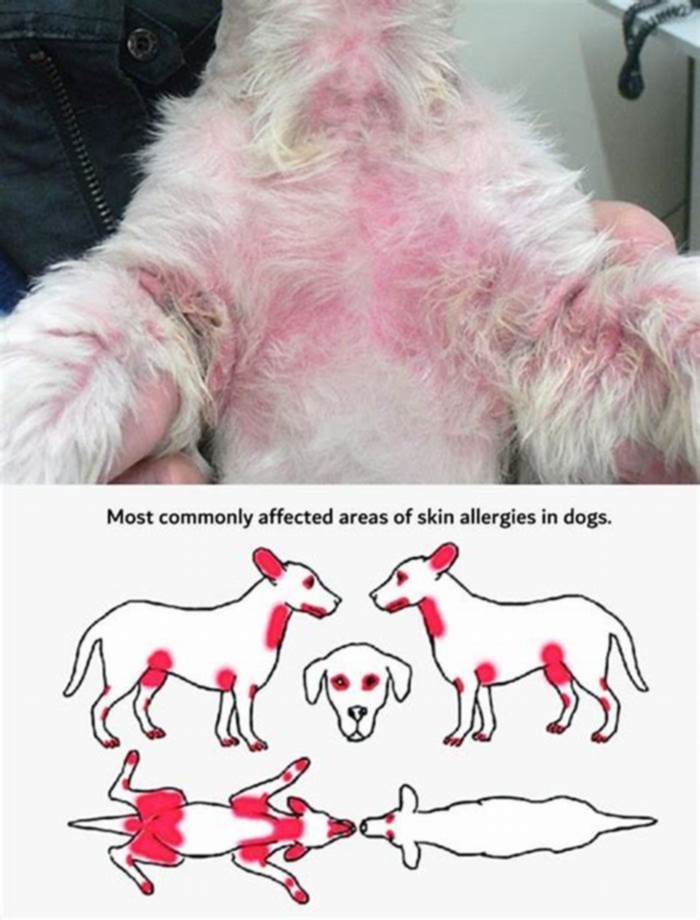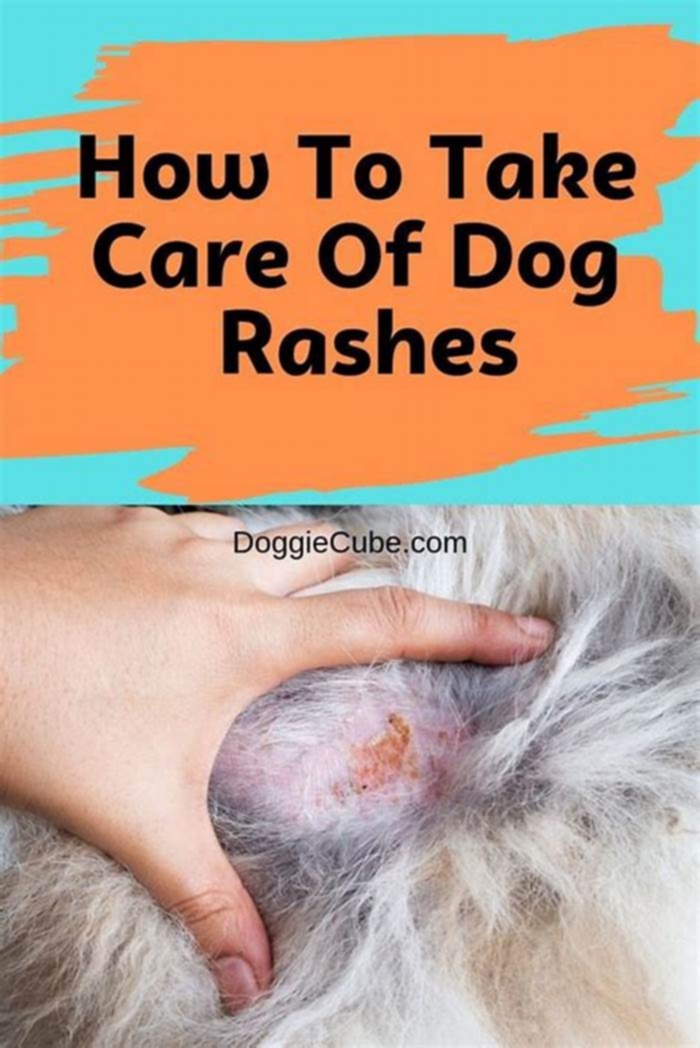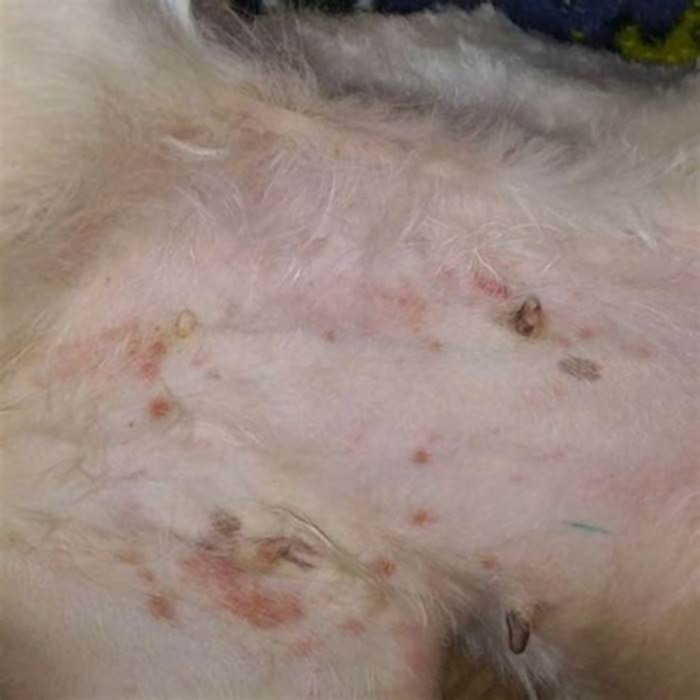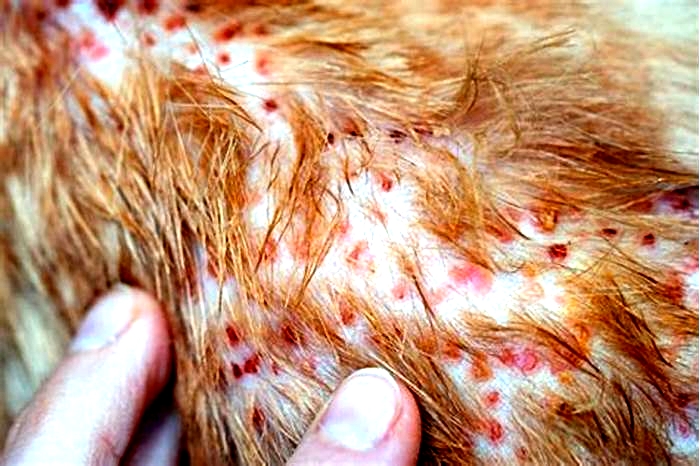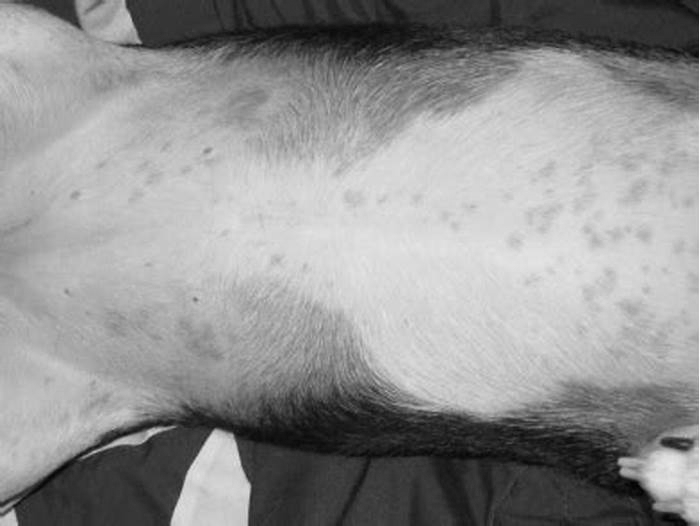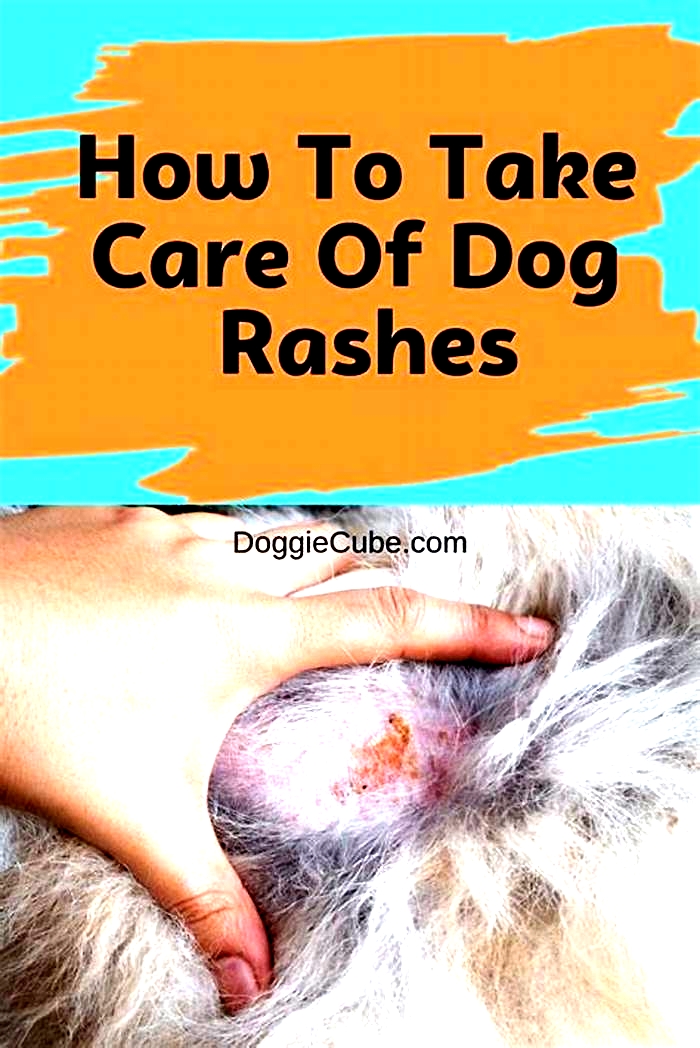What does a pet allergy rash look like
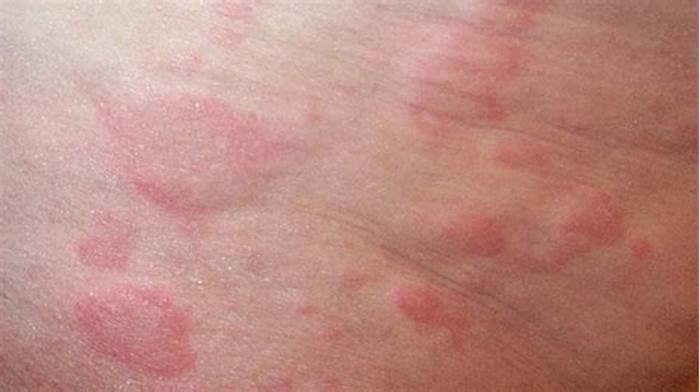
Pet Allergy
How common are allergies to pets?
Cat and dog allergy is common, especially in people who also have allergic asthma or hay fever. It is also possible to be allergic to other types of animals including those with hair (fur), feathers or even scales, including:
- Rabbits
- Rodents such as guinea pigs, mice and hamsters
- Birds
- Horses
- Reptiles, such as iguanas
- In addition allergy to pet bedding (straw, shredded paper, moulds ) is a possibility
What causes pet allergy?
Pet allergy is caused by the protein in a pets saliva, urine or dander (shed skin particles). Cats and dogs produce multiple proteins with the potential to cause a pet allergy. It is commonly thought that the hair causes symptoms, however it is the pets dander that is mainly responsible. This is spread when pets shed their hair or feathers or groom themselves. Cat allergen is found on the skin and fur and is due to their sebaceous and salivary glands: when a cat licks itself the allergen is transferred onto the hair. Dog allergen is found mainly in the hair, dander and saliva. The main source of allergen for rodents, such as mice, is in their urine.
Allergic signs and symptoms are seen in people whose immune system mistakenly recognises pet dander, saliva, or urine, as a harmful substance (allergen) and, as a result, produces IgE antibodies as a defence mechanism. On further exposure to that pet allergen, allergic signs and symptoms may be seen as an allergic reaction.
Pet hair itself can also act as a carrier of other airborne allergens: pollen, house dust mite and mould, which can cause allergic symptoms in individuals with hay fever, asthma, or eczema. Pet dander alone can also be an allergic trigger in these allergic conditions. Having a cat or dog allergy is also a risk factor for the development of allergic rhinitis or asthma.
Exposure to pet dander in the environment
It is possible to develop an allergy to an animal or pet at any time, even where that animal has previously been a pet, or where a pet does not live in your home. Workplace exposure can occur for occupations such as vets, farmers, and laboratory scientists.
Pet allergens can also be found in schools and public places where they have been transferred on clothing and shoes from pet owners. Exposure to cat allergen in schools can exacerbate symptoms in asthmatic children with cat allergy.
Cat allergen is particularly persistent and can remain in homes long after a cat is no longer there. Pet dander can become airborne as hair is shed by grooming and collects on furniture and other surfaces.
Horse allergy is an important problem even in a young urban population. It causes a wide range of allergic symptoms from urticaria (rash) to respiratory problems. This type of allergen can also be carried on clothing with the dander being transferred.
Hypo-allergenic pets
There is no such thing as a truly non-allergic dog or cat.
Signs and symptoms of a pet allergy
Allergic symptoms of a pet allergy can be mild, moderate or severe, depending upon the individuals sensitivity and level of exposure. They can start within minutes of exposure or can be delayed (late phase response) and include:
- Sneezing
- Coughing
- Breathing difficulties
- Wheeze
- Watery, red, itchy eyes
- Skin rash/Hives
- Eczema flare
- Anaphylaxis
Diagnosing a pet allergy
Identifying allergic triggers is an important part of managing an allergy.
If you suspect pet allergy it is important to discuss this with your GP or Health Professional, especially if you have other allergic conditions such as asthma, rhinitis or eczema.
Your GP/Health Professional may refer you for allergy testing to confirm or exclude a pet allergy. This can be done by a blood test for specific IgE to the suspected animal and/or by skin prick testing. Referral to an allergy specialist may be needed. Allergy testing before getting a pet for people without any symptoms of allergy is unhelpful. This is because subsequent exposure may still lead to allergy in a person who has previously not been allergic to pets.
Practical advice on reducing animal dander exposure
Using a combination of the following pet allergen control measures may help to reduce symptoms and control existing allergic symptoms that are triggered by pet allergen.
Inside the home:
- Keep pets outside if possible and always out of the bedroom
- Do not allow pets to sit or sleep on soft furnishings such as sofas, cushions, or beds
- Wash pet bedding regularly on a hot wash
- Remove horse-riding clothes before entering the home. Bag and wash them and shower after riding
- Using an air purifier may help reduce indoor airborne allergens
Outside the home:
- Avoid contact with relevant animals
- If possible avoid visiting homes/areas where pets live
- If exposure is likely, try taking an antihistamine beforehand and use your prescribed preventative treatment for asthma / rhinitis. Avoid touching the pet or being in the same room
- Wash hands after touching or being licked by a pet
- Washing and grooming pets regularly (by a non-allergic person) may help reduce allergen shedding.
By cleaning:
The aim of these recommendations are to reduce the amount of allergen in the air and environment, including on surfaces, soft and hard furnishings and the floor.
- Damp dust as often as possible to help keep pet dander (as well as dust mites and other allergens) to a minimum
- Clean carpets using a vacuum (but it must be one with a HEPA (high efficiency particulate air) filter and wash hard floor surfaces with hot, soapy water
- Wash soft furnishings like duvet covers, curtains, cushions, soft toys on a hot wash cycle
- Super- heated steam cleaning has the potential to disrupt allergens so that they no longer cause symptoms
- Clean animal cages outside and replace any bedding or litter that has urine on it.
Pet allergy management and treatment
- Avoid the pet or animal where possible
- If this is impossible or insufficient then medication to help alleviate the symptoms can be used after advice from a Health professional (GP or Pharmacist). Medicines include:
- Non-sedating antihistamines
- Antihistamine nasal sprays
- Eye drops
- Nasal sprays
- Asthma inhalers
- Allergen barrier balm
- In moderate to severe pet-induced allergy, allergen-specific immunotherapy may be appropriate. This requires initial GP assessment then referral to allergy/immunology specialist. It is unlikely to be NHS funded.
Does an Allergic Reaction From a Cat Produce a Rash?
According to the Humane Society of the United States, one third of American households have cats, and many families with cats have more than one 1. Millions of individuals have allergies to their domestic pets, and allergies are much more likely to occur in response to cats than to dogs.
According to the Humane Society of the United States, one third of American households have cats, and many families with cats have more than one 1. Millions of individuals have allergies to their domestic pets, and allergies are much more likely to occur in response to cats than to dogs. When a cat is introduced into a household, you should be on the lookout for any new allergies in your family, which may include skin allergies.
Animal Dander
The immune system defends your body against foreign infections. All allergies are due to an abnormal immune response to a normally harmless substance, known as an allergen. In cat allergies, the reaction is usually against a protein known as Fel d 1, which is produced by all cats. The protein is light enough to become airborne, and it can stay so for long periods of time. The amount of allergen produced is unrelated to the length of cat hair. Male cats may produce more of this protein. There is no breed of cat that does not produce the allergen.
Hives
Cat dander is especially effective at inducing an allergic rash, called hives, in susceptible people. If you have skin allergies to cat dander, the rash can occur within hours of exposure to an animal. The symptoms of hives include skin swelling, redness and itchiness. These rashes are called wheals and may change shape or size over time. Hives usually go away on their own, but they can be extremely irritating.
Other Symptoms
Cat exposure can also cause a number of other allergic symptoms. If you suffer from allergic rhinitis, you may experience nasal congestion, runny nose and sneezing. Some people have red, itchy and watery eyes, a condition known as allergic conjunctivitis. Other symptoms of allergies include have facial pain, cough and a bluish discoloration under your eyes. Cats can also cause a reaction of the subcutaneous tissue, known as angioedema. Symptoms include puffiness of the lips and face. Angioedema can also cause swelling of the larynx, causing difficult breathing. If you have allergies, they may be worsened by cat dander, leading to breathlessness, wheezing, difficulty breathing and chest tightness.
Treatment and Prevention
Many of the allergic reactions to cats can be symptomatically treated with antihistamines. Newer antihistamines such as fexofenadine and loratidine cause minimal sedation and are often effective. Stronger, older antihistamines such as diphenhydramine may be more effective, but are more likely to cause sedation. Many of these medications are available over the counter. Other symptomatic treatments include decongestants, leukotriene modifiers and cromolyn sodium. Immunotherapy, while expensive and time-consuming, offers long-term, and possibly permanent, allergy relief.
Even if you have a cat allergy, you don't necessarily have to give up your cat. Whether you have to or not depends on the severity of your allergies and if you can treat them easily. However, if you suffer from severe, uncontrollable allergies, this last-resort option may be necessary.
Pet Allergy
Avoiding animals is not always possible nor the choice many people make. When you cant completely avoid pets or animals, there are medicines and steps you can take to control your symptoms.
Over-the-counter or prescription medicine options for animal allergies include antihistamines and corticosteroids.
Allergy Medicine Guide for Pet Allergy
Nasal rinse: Using a saline (saltwater) nose rinse can help cut down mucus and rinse pollen out of your nose. Remember to use these as directed.
Nose sprays: Corticosteroid nose sprays are effective and have few side effects. They treat the swelling and inflammation in your nose. (Examples include Nasacort, FLONASE, and RHINOCORT.) Antihistamine nasal sprays such as Astelin and Patanase are also effective options.
Eye drops: Allergy eye drops can be very helpful in managing eye allergy symptoms. They can relieve burning sensation, itchiness, redness, increased tearing, and swelling. Common eye drops include SYSTANE ZADITOR, Optivar, and Pataday. In addition, artificial tears can be helpful.
Antihistamines: Antihistamines come in pill, liquid, or nasal spray form. They can relieve sneezing and itching in the nose and eyes. They also reduce a runny nose and, to a lesser extent, nasal stuffiness. Look for a long-acting, non-drowsy antihistamine. (Examples include ZYRTEC, Claritin, Allegra, CLARINEX.)
Decongestants: Decongestants are available as pills, liquids, nasal sprays, or drops. They help shrink the lining of the nasal passages and relieve stuffiness. They generally are only used for a short time (usually three days or less examples include SUDAFED, Vicks Sinex, Afrin). Check with your doctor before using decongestants if you have high blood pressure, glaucoma, thyroid disease, or trouble urinating.
Leukotriene modifiers (such as montelukast): This medicine can help by blocking chemicals your body releases when you have an allergic reaction. (Examples include SINGULAIR, Zyflo CR, ACCOLATE.)
Cromolyn sodium: This is a nasal spray that blocks the release of chemicals that cause allergy symptoms, including histamine and leukotrienes. This medicine has few side effects, but you must take it four times a day. (Examples include NasalCrom)
Allergy shots: If other treatments and steps are not working, allergy shots (immunotherapy) can be very effective. They require a time commitment and multiple appointments. Your allergist injects a small amount of allergen into your skin. They watch you for symptoms. Over time, the amount of allergen they inject is increased. This treatment trains your immune system to tolerate the allergen better. Talk with your allergist to see if this option is right for you.
Allergen-reducing cat food: If you have a cat, you can now buy cat food that can reduce cat allergens. One product available is Purina Pro Plan LiveClear. The food neutralizes a common allergen, Fel d1, found in cat saliva.
Seasonal Allergies in Dogs
What Are Seasonal Allergies in Dogs?
Dogs can be allergic to various things in the environment, such as pollen from trees and grass. If a dog displays allergy symptoms only during certain seasons, such as spring and fall, a seasonal allergy rather than a year-round allergy is suspected. This means that the dog is allergic to allergens that are in the environment only during certain times of the year.
Dogs with seasonal allergies can be itchy in specific areas, such as their paws, or be itchy all over. They can also have recurring ear infections and skin infections when they are exposed to various environmental allergens at certain times during the year.
Seasonal allergies are different from year-round environmental allergies and food allergies because symptoms are observed only during specific times of the year, depending on what the dog is allergic to and when the specific allergens are prevalent in the environment. In contrast, dogs with year-round allergies will have skin issues all year long.
Most dogs with seasonal allergies have symptoms during the spring (March through May) and fall (September through November), but this can vary based on weather and location.
Types of Seasonal Allergies in Dogs
The following allergens commonly cause seasonal allergies in dogs:
Symptoms of Seasonal Allergies in Dogs
Symptoms will vary depending upon the dog, but may include:
Excessive licking, usually of the paws, but the licking can be anywhere on the body
Saliva staining of the fur where the dog is licking the skin excessively
Chewing/gnawing
Scratching
Hair loss
Redness of the skin
Crusts
Moist skin
Darkening of the skin (black pigmented skin)
Thickening of the skin (elephant skin)
Odor to the skin or ears
Head shaking
Pawing at the ears, eyes, or face
Recurring scooting or licking of the anus due to anal sacs becoming problematic secondary to allergies
Watery eyes
Reverse sneezing
The most common areas of a dogs body that are affected by seasonal allergies are the paws (especially between the digits), limbs, mouth, ears, abdomen, groin, armpits, tail, and around the eyes.
Causes of Seasonal Allergies in Dogs
A dog that suffers from seasonal allergies has an immune system that is hypersensitive to specific allergens in the environment. When the levels of the allergens become high, the dogs immune system becomes triggered, leading to an allergic response and the development of symptoms.
How Veterinarians Diagnose Seasonal Allergies in Dogs
Seasonal allergies are diagnosed based on physical exam findings, symptoms, and a history of having recurring symptoms and infections during the same seasons annually.
Other skin conditions that can cause similar symptoms must also be ruled out, such as skin mites, fleas, or a food allergy, to reach a diagnosis of seasonal allergies. If fleas are found on a dog with symptoms of severe itchiness, redness, and hair loss, then a flea allergy is diagnosed and the dog is started on effective flea and tick prevention and anti-itch medication to see if symptoms resolve.
Treatment of Seasonal Allergies in Dogs
Seasonal allergies are a chronic condition, which means there is no cure. However, there are ways to treat and manage symptoms to keep your dog comfortable, including:
Year-round flea and tick prevention such as NexGard, Simparica, Bravecto, Seresto collar,and K9 Advantix II
Anti-itch medications such as Apoquel, Cytopoint, and prednisone are prescribed to alleviate any current itchiness and to manage the itch during flare-ups. If the itch can be controlled, the dog will remain comfortable and be at less risk for secondary skin infections.
Once the allergy seasons are determined for a dog based on prior history, the anti-itch medication is started one month prior to the start of the allergy season and continued one month past when the allergy season ends.
An omega-3 fatty acid (fish oil) supplement, such as Welactin, Vetoquinol, or Dermaquin, will protect the skin barrier and minimize allergy symptoms.
An omega-3 fatty acid supplement can also help with anal gland issues for dogs that tend to need their anal glands expressed more frequently during allergy season. It takes four to sixweeks for an omega-3 fatty acid supplement to become effective, so it is best for a dog with seasonal allergies to be on this supplement year-round.
Routine ear cleaning can help clear a current ear infection and reduce the frequency of future ear infections. If an ear infection is present, treat the infection and clean the ears based on recommendations from your veterinarian. When there is no infection, clean the dogs ears with a routine ear cleaner, like EpiOtic Advanced, on a routine basis throughout the year (typically every two to threeweeks for maintenance).
Ear medications, such as Mometamax, Posatex, and Tresaderm, are prescribed to treat bacterial and/or yeast infections in a dogs ears. After treatment, make sure to schedule a follow-up appointment with your veterinarian to recheck that the infection has resolved.
Oral medications are often needed when a dog has a skin infection on multiple areas of the body. Antibiotics, such as clindamycin and cephalexin, are prescribed to treat bacterial skin infections, and anti-fungal medication, such as ketoconazole, is prescribed to treat fungal skin infections, such as yeast infections.
Topical therapy can be used to soothe the skin and help with treatment of skin infections. There are many topical therapy options, including anti-bacterial and anti-fungal ointments, shampoos, conditioners, mousses, sprays, and wipes. Ask your veterinarian which topical therapy would work best based on your dogs allergy symptoms and current skin condition.
Immunotherapy for Dogs With Seasonal Allergies
Immunotherapy consists of either allergy shots or allergy oral drops that are formulated based on allergy test results. To determine what environmental allergens a dog is most allergic to based on where the dog lives, a blood test can be performed by your veterinarian using a specific blood test (Heskas Allercept or Nextmunes Pet Allergy Xplorer) to screen a dog for environmental allergies.
In addition to the allergy blood test, a veterinary dermatologist will also perform intradermal testing, which involves injecting small amounts of various environmental allergens into a dogs skin in specific locations. The injection sites are then monitored over a period of time for signs of a skin reaction. If a reaction is seen, then the dog is likely allergic to the allergen that was injected at that site.
It is important to note that the allergy (blood) testing and the intradermal testing are not performed to provide a diagnosis of seasonal allergies. Rather, they are used to aid in creating immunotherapy treatment for a dog that has been diagnosed with seasonal allergies. The goal with immunotherapy is to desensitize a dog to the environmental allergens that trigger the allergy symptoms. Immunotherapy is usually given long-term at a maintenance dose.
It is difficult to limit a dogs exposure to certain allergens. Pollen from trees, grass, or weeds can be tracked into the house easily. Wiping a pups paws when they come inside can sometimes be helpful.
Recovery and Management of Seasonal Allergies in Dogs
Seasonal allergies are not only frustrating for dogs but also for pet parents, because they are not curable. Fortunately, though, with seasonal allergies, symptoms can be managed by knowing what seasons trigger a dogs symptoms and initiating treatment prior to the start of each allergy season. Anti-itch medication should manage the itch throughout each season so that the dog is not scratching, licking, or chewing at the skin, which can lead to secondary skin infections.
Cleaning your dogs ears every two to three weeks year-round with a routine ear cleaner is important to minimize the risk of an ear infection to develop. The ears should also be cleaned after your dog has a bath or partakes in a water activity, such as swimming, to remove any water from within the ear canals. Giving an omega-3 fatty acid supplement daily year-round can provide skin support as well. Management of seasonal allergies is usually lifelong unless a dog is able to move to an area where the allergen that is causing the reaction is no longer present.
Monitor your pet for the following symptoms throughout the year:
Itchiness (scratching, licking, gnawing, chewing)
Head shaking or pawing at the ears or eyes
Any skin lesions (such as redness, crusts, thickened or black pigmented skin)
Odor to the skin or ears
If you see any of these symptoms, schedule a vet appointment as soon as possible. Your dogs skin condition can worsen quickly if allergy symptoms are not controlled. If your dog is licking or chewing, have them wear an e-collar until the appointment to prevent further worsening of the skin. Your veterinarian will prescribe treatment to make your dog more comfortable and treat for any skin or ear infection, if present. Managing a dogs allergy symptoms with therapy and reporting to your veterinarian any skin issues as they arise are the most effective ways to help a dog with seasonal allergies.
WRITTEN BY
Michelle Diener, DVMVeterinarian
I live in Raleigh, North Carolina. I obtained by BS degree in Biology at UNC-Chapel Hill in 2000 and my DVM degree at NCSU in 2006. I have...

